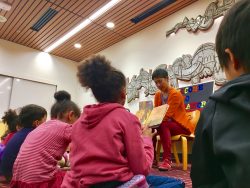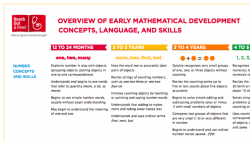Math Standards and Practices
Math Practices Standards: Exploring Math Skills in Read Alouds
 Young mathematicians – and the adults in their lives – engage in playful and curious mathematics in many ways in their everyday lives. When we focus on math practices, we are paying attention to what mathematicians do. Mathematicians do many things! They make sense of problems and persevere in solving them. They reason about their ideas. They make connections between one idea and another idea. Children’s literature lends itself to exploring math practices and supporting young mathematicians to know that, as mathematicians, they are engaging in (and learning to engage in) all of these practices. Through our story examples, we will share ways to talk about math practices with young mathematicians.
Young mathematicians – and the adults in their lives – engage in playful and curious mathematics in many ways in their everyday lives. When we focus on math practices, we are paying attention to what mathematicians do. Mathematicians do many things! They make sense of problems and persevere in solving them. They reason about their ideas. They make connections between one idea and another idea. Children’s literature lends itself to exploring math practices and supporting young mathematicians to know that, as mathematicians, they are engaging in (and learning to engage in) all of these practices. Through our story examples, we will share ways to talk about math practices with young mathematicians.
- Make sense of problems and persevere in solving them
- Reason about their ideas
- Make connections
- Ask Questions
- Explain their thinking
- Argue
- Justify
- Prove
- Model and build
- Use tools
- Look for and use structure and patterns
Math Content Standards: A Handy Guide
When we focus on math content, we are paying attention to what mathematicians know. Young mathematicians know – and are coming to know – so much about mathematics everyday! Young mathematicians learn number names and the counting sequence. They learn how to identify and describe shapes. They learn spatial relationships — up, down, behind, beneath! Children’s literature lends itself to exploring all sorts of mathematics in our world. Through our story examples, we will share ways to playfully discuss math content with young mathematicians.
Here is a guide for the kinds of mathematical content – focused on number concepts, shapes, and spatial relationships – you might explore across the ages of 12 months to 5 years.

